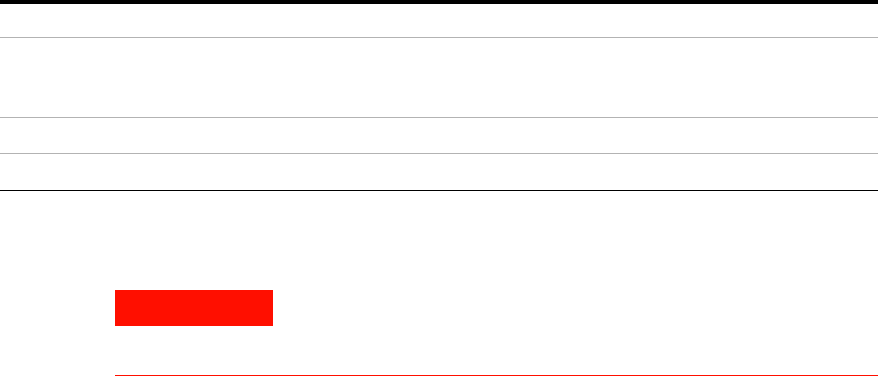User`s guide
Table Of Contents
- Agilent E3632A DC Power Supply
- Table of Contents
- List of Figures
- List of Tables
- 1 Getting Started
- 2 Operation and Features
- Overview
- Constant Voltage Operation
- Constant Current Operation
- Storing and Recalling Operating States
- Programming the Overvoltage Protection
- Programming the Overcurrent Protection
- Remote Voltage Sensing
- Disabling the Output
- System-Related Operations
- Remote Interface Configuration
- GPIB Interface Configuration
- RS-232 Interface Configuration
- Calibration
- 3 Remote Interface Reference
- SCPI Command Summary
- Introduction to the SCPI Language
- Simplified Programming Overview
- Using the APPLy Command
- Output Settings and Operation Commands
- Triggering Commands
- System-Related Commands
- Calibration Commands
- RS-232 Interface Commands
- SCPI Status Registers
- What is an event register?
- What is an enable register?
- SCPI status system
- The Questionable Status register
- The Standard Event register
- The Status Byte register
- Using Service Request (SRQ) and Serial POLL
- Using *STB? to read the Status Byte
- Using the Message Available Bit (MAV)
- To interrupt your bus controller using SRQ
- To determine when a command sequence is completed
- Using *OPC to signal when data is in the output buffer
- Status Reporting Commands
- Halting an Output in Progress
- SCPI Conformance Information
- IEEE-488 Conformance Information
- 4 Error Messages
- 5 Application Programs
- 6 Tutorial
- 7 Characteristics and Specifications

6 Tutorial
Connecting the Load
158 E3632A User’s Guide
Remote voltage sensing
Normally, a power supply operating in the constant voltage
mode achieves its optimum line and load regulations, its
lowest output impedance, drift, and ripple and noise, and its
fastest transient recovery performance at the power supply
output terminals. If the load is separated from the output
terminals by any lead length, some of these performance
characteristics will be degraded at the load terminals —
usually by an amount proportional to the impedance of the
load leads compared with the output impedance of the
power supply.
Table 6 - 1 Wire rating
AWG 10 12 14 16 18 20 22 24 26 28
Suggested
maximum
Current(amps)
[1]
40 25 20 13 10 7 5 3.5 2.5 1.7
mΩ/ft 1.00 1.59 2.53 4.02 6.39 10.2 16.1 25.7 40.8 64.9
mΩ/m 3.3 5.2 8.3 13.2 21.0 33.5 52.8 84.3 133.9 212.9
[1] Single conductor in gree air at 30 °C with insulation
WARNING
To satisfy safety requirements, load wires must be heavy enough not
to overheat while carrying the short-circuit output current of the
power supply.










